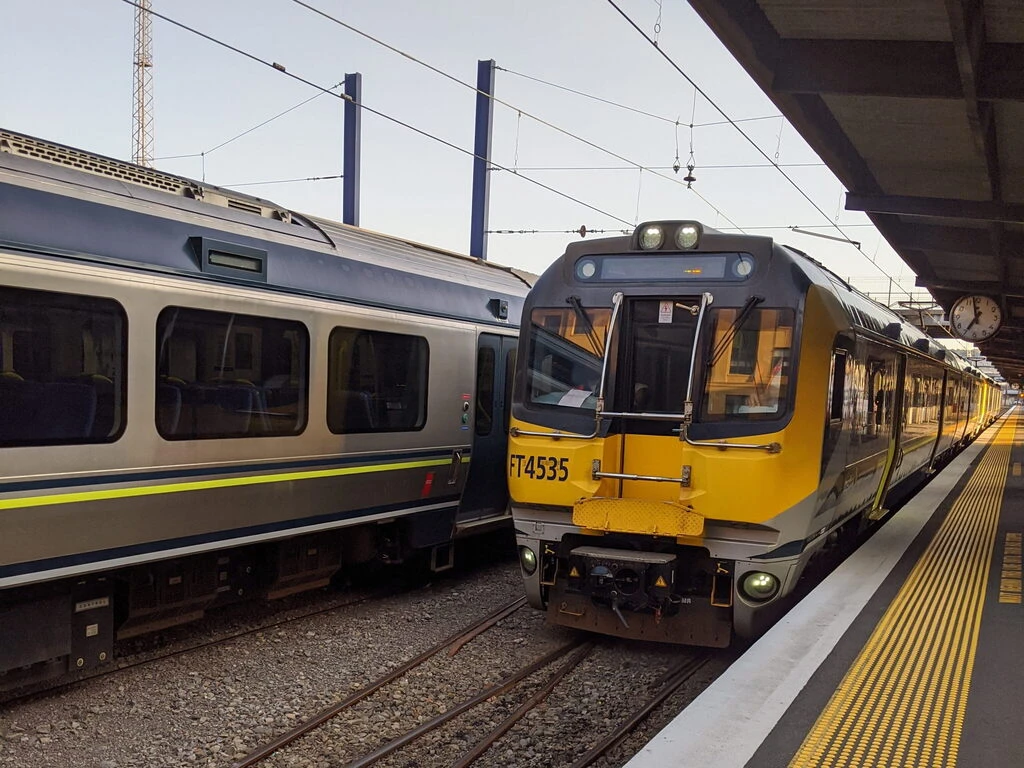David Parsons. Wellington’s Railways: Colonial Steam to Matangi. 2010.
This book is certainly not lacking in detail. It covers the early development of Wellington region rail (different parts of New Zealand, and I guess many other countries, were quite isolated 150 years ago) until 1920; refinements from 1920 to 1970; and the changes from 1970 to 2010. Wellington rail did manage to mostly hang on through the global Reagan-Thatcher neoliberal era. It has relatively recently gotten through to Waikanae and perhaps will reach Levin.
The tramways didn’t make it through that era, though, and it actually is kind of hard to get from one end of central Wellington to the other end by bicycle or transit. A good LRT would help with that; Let’s Get Wellington Moving is also going to work on that even without the LRT, though I wonder how effective it will be.
There is a fulsome description of the lines and the railway equipment. Equipment mostly isn’t that interesting to me, but I actually do care about HVAC these days. Turns out that, even though the windows don’t open on the newest “Matangi"-class equipment (2010), there is ventilation through HVAC; if there is bad air outside, it can be set to recirc (where you might get all the recirculated viruses also). Before today’s Matangi equipment there was then-50-year-old English Electric and (Hungarian) Ganz Mavag equipment. There are also descriptions of the Cook Strait cargo planes and ferries (the ones that can transport railcars) and a note that the “Iron Sailor” is a NZ-developed suction device for mooring, which replaces ropes.
There’s also mention of the Cable Car. Back in 2010 it ran until 10pm on weekdays. That would have been an option for getting home from judo, versus the brutal uphill climb. It’s hard to find out when that changed. The Internet Archive might have some information, but then I’d need to navigate the Archive.
We’ve seen that NZ Railways wasn’t great in Can’t Get There from Here by André Brett. Wellington and Manawatu Railway was private and this book says that it managed its assets well (and made money). It had a liquidity crunch before it started operations but managed to solve it by selling fares and shipping freight and profited, investing in upgrades, including importing lots of US equipment. Eventually, after 21 years, it was purchased by the Government as per its founding agreement, and integrated into NZ Railways. Nationalization! They did that in 1908!
There isn’t generally much other talk of NZR being anti train (as described by Brett), but there is this line near the end: “The Gracefield line suffered at the hands of the almost anti-rail policies of the management of Tranz Rail”.
Also, reading the early history, I found that I actually know about many of the places mentioned on Hutt Road; I bike past them. They were very different, and sometimes under water, 150 years ago. Building around Wellington was, and is, seismically and topographically complicated. Machinery and our knowledge of science and engineering helps these days. How did they? Well, not very sturdily.
Some quotes:
-
“Like many stations on the suburban system, Plimmerton used to boast a full range of facilities for the travelling public.” (In particular: toilets, bookstall). All but the smallest Swiss stations have that.
-
“In Wellington the revenue covered only 60 percent of the expenditure and although this was considerably better than the 25 per cent covered in Auckland, Christchurch and Dunedin, it called for some action either by cuts in services or financial support to reduce the deficit.” (Late 1960s) Did it really? Or should we subsidize transit? (I just wrote to Region of Waterloo councillors about not having more ads on transit…)
-
“The success of these trains [to Paraparaumu] was soon apparent. It was reported that about 300 people were travelling into Wellington each day.” (The Te Huia Auckland-Hamilton train seems to have 350 daily passengers after a 2021 launch.)
-
“Many of these [permanent station] buildings have now been destroyed due to vandalism and lack of respect, many having been replaced or reduced to little more than waiting shelters.” Also I bet it’s in the architecture of the places. In the next paragraph, the text talks about how the vandalism started when staff were withdrawn. Uh, yes?
Other observations:
- The book mentions traffic between intermediate stations (e.g. between Upper Hutt and Silverstream), a concept which GO Transit in Ontario has trouble with.
- Units of measure: miles, chains, pounds, shillings.
- Trains were slow!
- More service = more passengers. Who woulda thought.
- What’s with the sans-serif font?

